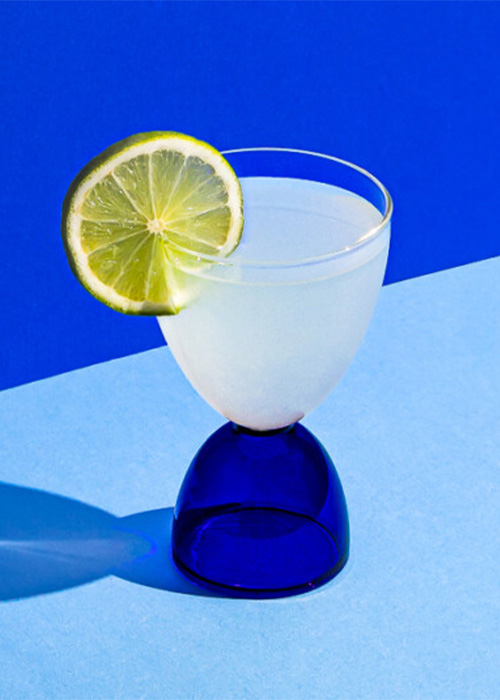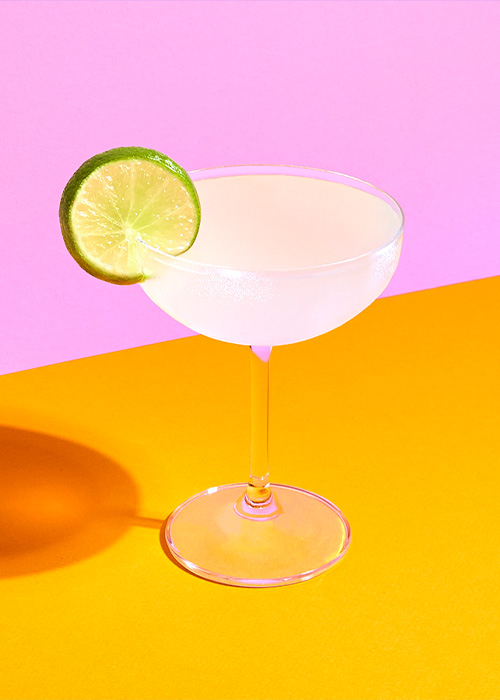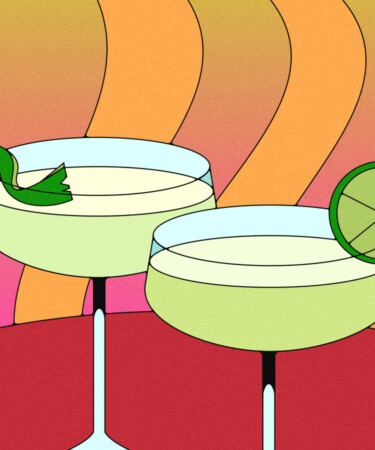In the world of cocktails, sometimes swapping just one ingredient in a recipe can lead to an entirely different drink. Though this facet of drink-making is part of what makes the practice so fascinating, the many similarities between cocktail specs can also be a bit confusing.
One pair of drinks that demonstrates this phenomenon is the Gimlet and the Daiquiri. Both simple, three-ingredient cocktails feature lime and sugar, are shaken, and served up. But although they only differ in base spirit, there’s a lot of nuance when it comes to how to approach each. This stems from their different histories: The Gimlet originated as a popular drink among British sailors in the 19th century and the Daiquiri emerged from Cuba not too long after.
Here, we break down the subtle differences that give these nearly identical cocktails different flavor profiles.
Daiquiri vs. Gimlet: History
Modern-day recipes for a Gimlet suggest that the cocktail combines gin with lime juice and simple syrup, but the drink’s original recipe actually called for something a little different: Rose’s lime cordial. Launched by Lauchlin Rose in 1867, Rose’s lime cordial was crucial to preventing scurvy in the British Royal Navy. Carrying massive quantities of the fruit was too bulky and lime juice would spoil quickly, but Rose found that curing the fresh juice and peels with sugar would preserve the liquid, so sailors could bring it on long journeys. Naturally, they combined the cordial with gin, creating the Gimlet as a Royal Navy staple. But it wasn’t until 1922 that the recipe first appeared in print, published in “Harry’s ABC of Mixing Cocktails” by Harry MacElhone. This recipe calls for equal parts gin and Rose’s lime cordial.
Though the exact origins of the Daiquiri are a little fuzzy, it’s widely accepted that the classic cocktail was first created around the turn of the 20th century by Jennings Cox, an American engineer living and working in Cuba. It’s believed that he decided to name the cocktail after the local town of Daiquirí. It first appeared in a cocktail recipe book in 1914 as a combination of lime juice, rum, and powdered sugar.
Daiquiri vs. Gimlet: Ingredients

Since the Gimlet was originally introduced as an antidote to scurvy, the lime component of this drink is essential. For those looking to make a version of the Gimlet closer to its original form, it’s best to follow the lead of Toby Cecchini, co-owner of New York City’s The Long Island Bar. Though a version of Rose’s lime cordial still exists on the market, it’s not a quality ingredient that he would suggest using in a well-done drink. Instead, Cecchini makes his own take on the ingredient, in the form of a lime oleo saccharum — an intensive process that involves hours of marinating lime peels and juice with sugar.
Though the Daiquiri and Gimlet technically have lime and sugar in common, making a Gimlet with the lime oleo saccharum really amplifies the lime flavor and adds a richness on the palate that hits a bit different than the fresh lime juice in a Daiquiri.
While the base spirit is important to making a great Gimlet, you’re typically safe just choosing any classic London dry gin. Whereas when it comes to making a great Daiquiri, the focus tends to lie more on the rum selection. With such a wide selection of rums out there, bartenders enjoy experimenting with different bottles — often mixing several together in one drink. For example, on VinePair’s “Cocktail College” podcast, William Elliott of Brooklyn’s Maison Premiere shares that his ideal Daiquiri spec splits the base between one ounce of Neisson Rhum Agricole Blanc and one ounce of Santa Teresa 1796.
For the sugar component, some bartenders also prefer a denser simple syrup for the Daiquiri, using a two-to-one ratio of sugar to water in the simple syrup to add a richer mouthfeel to the drink. And for the garnish, you can’t go wrong with a lime wheel for either drink.
Daiquiri vs. Gimlet: Flavor Profile

Both the Daiquiri and the Gimlet are zippy, citrusy drinks that can be both flavorful and refreshing. Both cocktails are shaken with ice — temperature is paramount to a great Daiquiri or Gimlet — strained, and served up. But the differences in ingredients noted above lead to slightly different flavor profiles.
For the Daiquiri, the rum introduces notes of sweet fruit and spice, and, depending on which rum you go with, some might even add a funky, vegetal note. Whereas for the Gimlet, the London dry gin will add aromatic juniper notes and a crisp, clean feeling on the palate. And depending on whether or not you opt to make your own oleo saccharum, the Gimlet might offer more intense lime flavor than the Daiquiri’s freshly squeezed lime juice.
Both cocktails are a tangy, delicious choice for a hot day, but they each have their own appeal.
